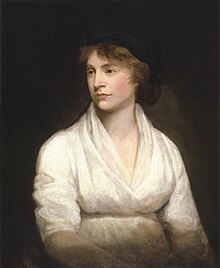From Wikipedia, the free encyclopedia
Marvin Lee Minsky (born August 9, 1927) is an American cognitive scientist in the field of artificial intelligence (AI), co-founder of the Massachusetts Institute of Technology's AI laboratory, and author of several texts on AI and philosophy.[10][11][12]
Biography
Marvin Lee Minsky was born in New York City to an eye surgeon and a Jewish activist,[13] where he attended The Fieldston School and the Bronx High School of Science. He later attended Phillips Academy in Andover, Massachusetts. He served in the US Navy from 1944 to 1945. He holds a BA in Mathematics from Harvard (1950) and a PhD in mathematics from Princeton (1954).[14][15] He has been on the MIT faculty since 1958. In 1959[16] he and John McCarthy founded what is now known as the MIT Computer Science and Artificial Intelligence Laboratory. He is currently the Toshiba Professor of Media Arts and Sciences, and Professor of electrical engineering and computer science.Isaac Asimov described Minsky as one of only two people he would admit were more intelligent than he was, the other being Carl Sagan.[17]
Minsky's inventions include the first head-mounted graphical display (1963) and the confocal microscope[4][18] (1957, a predecessor to today's widely used confocal laser scanning microscope). He developed, with Seymour Papert, the first Logo "turtle". Minsky also built, in 1951, the first randomly wired neural network learning machine, SNARC.
Minsky wrote the book Perceptrons (with Seymour Papert), which became the foundational work in the analysis of artificial neural networks. This book is the center of a controversy in the history of AI, as some claim it to have had great importance in driving research away from neural networks in the 1970s, and contributing to the so-called AI winter.[citation needed] He also founded several other famous AI models. His book "A framework for representing knowledge" created a new paradigm in programming. While his "Perceptrons" is now more a historical than practical book, the theory of frames is in wide use.[19] Minsky has also written on the possibility that extraterrestrial life may think like humans, permitting communication.[20] He was an adviser[21] on the movie 2001: A Space Odyssey and is referred to in the movie and book:
Probably no one would ever know this; it did not matter. In the 1980s, Minsky and Good had shown how neural networks could be generated automatically—self replicated—in accordance with any arbitrary learning program. Artificial brains could be grown by a process strikingly analogous to the development of a human brain. In any given case, the precise details would never be known, and even if they were, they would be millions of times too complex for human understanding.In the early 1970s at the MIT Artificial Intelligence Lab, Minsky and Seymour Papert started developing what came to be called The Society of Mind theory. The theory attempts to explain how what we call intelligence could be a product of the interaction of non-intelligent parts. Minsky says that the biggest source of ideas about the theory came from his work in trying to create a machine that uses a robotic arm, a video camera, and a computer to build with children's blocks. In 1986, Minsky published The Society of Mind, a comprehensive book on the theory which, unlike most of his previously published work, was written for a general audience.
—Arthur C. Clarke, 2001: A Space Odyssey[22]
In November 2006, Minsky published The Emotion Machine, a book that critiques many popular theories of how human minds work and suggests alternative theories, often replacing simple ideas with more complex ones. Recent drafts of the book are freely available from his webpage.[23]
Awards and affiliations
Minsky won the Turing Award in 1969, the Japan Prize in 1990, the IJCAI Award for Research Excellence in 1991, and the Benjamin Franklin Medal from the Franklin Institute in 2001.[24] In 2006, he was inducted as a Fellow of the Computer History Museum. In 2011, Minsky was inducted into IEEE Intelligent Systems' AI's Hall of Fame for the "significant contributions to the field of AI and intelligent systems".[25][26] In 2014, Minsky won the Dan David Prize in the field of "Artificial Intelligence, the Digital Mind".[27] He was also awarded with the 2013 BBVA Foundation Frontiers of Knowledge Award in the Information and Communication Technologies category [28]Marvin Minsky is affiliated with the following organizations:
- United States National Academy of Engineering
- United States National Academy of Sciences
- Extropy Institute's Council of Advisors[29]
- Alcor Life Extension Foundation's Scientific Advisory Board[30]
- kynamatrix Research Network's Board of Directors[31]
Personal life
Minsky is an actor in an artificial intelligence koan (attributed to his student, Danny Hillis) from the Jargon file:
Minsky is an atheist.[35]In the days when Sussman was a novice, Minsky once came to him as he sat hacking at the PDP-6.
"What are you doing?" asked Minsky.
"I am training a randomly wired neural net to play Tic-tac-toe," Sussman replied.
"Why is the net wired randomly?" asked Minsky.
"I do not want it to have any preconceptions of how to play," Sussman said.
Minsky then shut his eyes.
"Why do you close your eyes?" Sussman asked his teacher.
"So that the room will be empty."
At that moment, Sussman was enlightened.[34]



